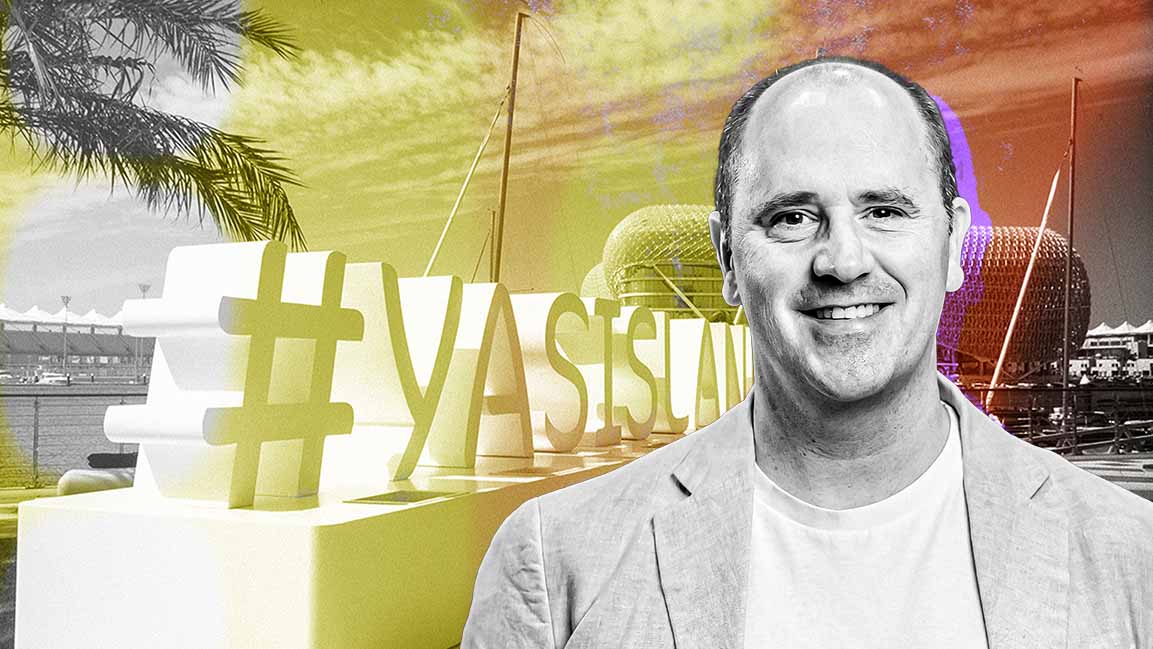- | 2:00 pm
Inside Yas Island’s strategy to be a cultural and entertainment ecosystem
Yas Island is redefining Abu Dhabi’s entertainment economy through data-driven strategy, global IP partnerships, and immersive cultural experiences.

Yas Island has reached a new phase of maturity, one defined by integration, year-round activity, and the economics of cultural participation. The Abu Dhabi destination now operates as a connected entertainment ecosystem where theme parks, hotels, retail, dining, and live events feed into one another, sustaining visitor engagement across every season.
The model blends creative strategy with commercial precision. By aligning major franchises like Stranger Things and Harry Potter with immersive, data-informed experiences, Yas Island has positioned itself within the global entertainment calendar rather than the traditional tourism cycle. This shift reflects how destinations across the Gulf are evolving from leisure attractions into drivers of the creative economy.
Liam Findlay, CEO of Miral Destinations, describes the approach as an ecosystem powered by culture—one that brings storytelling, and infrastructure into a single, scalable business platform.
Over the past few years, Yas Island’s strategy has redefined what it means to compete in the global entertainment market.
“We no longer see ourselves as a destination that audiences visit, we see ourselves as a cultural ecosystem that audiences participate in,” says Findlay. The vision is rooted in participation rather than promotion. Instead of relying on traditional tourism marketing, Miral Destinations connects with audiences through the cultural worlds they already love.
That approach is visible in its partnerships with global IPs. From Stranger Things: The Experience to high-profile campaigns featuring Jason Momoa, Ryan Reynolds, and Millie Bobby Brown, Yas Island has consistently timed collaborations to coincide with major cultural moments.
Each one situates the destination inside the global entertainment conversation, driving organic awareness and emotional connection. “We start with a clear belief: audiences don’t simply want to watch their favorite stories, they want to step inside them,” says Findlay.
The emphasis on “narrative integration,” as he calls it, underlines a central principle: belonging is more powerful than awareness. “Traditional marketing tells audiences what a destination offers. Story-world integration places the destination inside the cultural imagination,” he explains. When campaigns merge with the stories fans care about, the destination becomes part of those worlds.
Yas Island’s evolution also reflects the shifting economics of fandom. By embedding globally recognized stories into physical experiences, Miral Destinations taps into existing fan communities and their predictable engagement cycles.
This creates consistent international visitation, independent of local holidays or seasonal patterns. The island’s compact layout, just 25 square kilometers, adds structural advantage. “Our biggest structural advantage is the power of proximity…everything is only five minutes apart,” says Findlay. “That means guests don’t have to choose between convenience and content.”
That integration delivers efficiency and economic resilience. Each experience amplifies the others, extending dwell time and visitor spending across the island. Weather-proof attractions and indoor venues ensure continuous operation, while a steady flow of live events and seasonal programming keeps the calendar dynamic.
Underpinning this strategy is a deep reliance on data and behavioral insight. Market research informs every campaign—shaping tone, casting, and creative direction according to what resonates culturally in each key market. Findlay points to the India-focused campaign Zindagi Ko Yas Bol as an example. “It wasn’t just a creative direction; it was the result of studying what Indian travellers value most in a holiday, the kind of storytelling they respond to, and the cultural themes that feel authentic and aspirational,” he says.
These insights don’t just drive marketing—they inform how guests move, pause, and share experiences across the island. Every touchpoint, from queue flow to show timing, is optimized using behavioral mapping. This integration of data, emotion, and experience design strengthens engagement and supports a more efficient, repeatable business model.
Beyond commercial outcomes, Yas Island plays a central role in advancing the UAE’s creative and entertainment economy. “We bring global franchises to the region, create jobs across the creative sector, and set new benchmarks for the entertainment economy,” Findlay says. By hosting major IP-driven attractions while building its own distinctive cultural brand, the destination contributes to the country’s vision of becoming a hub for innovation and cultural production.
That ambition is now evolving toward the creation of original regional IP. “Global IP brings scale and reach, but the real long-term opportunity for Yas Island lies in building its own cultural footprint,” Findlay explains. The destination has developed a recognizable brand language and personality that audiences associate with humor, creativity, and participation—elements that can eventually anchor new, locally developed stories.
Looking ahead, Findlay sees the future of tourism shaped by culture and emotional affinity rather than geography.
“Travelers will look for destinations that are memorable, participatory, and meaningful. Convenience, accessibility, and year-round programming will remain important, but cultural relevance will become the primary driver of choice,” he says.
As new experiences such as TeamLab Phenomena Abu Dhabi and the upcoming Harry Potter-themed land prepare to open, Yas Island continues to expand its role as a platform for immersive entertainment.
By 2030, Findlay envisions Yas Island as “one of the world’s most influential entertainment ecosystems,” connecting travelers across the Middle East, Africa, India, and beyond. With a portfolio that fuses global IP, regional storytelling, and next-generation technology, the island is shaping a model of tourism where cultural engagement drives sustainable growth—and where entertainment itself becomes an enduring economic engine.








































